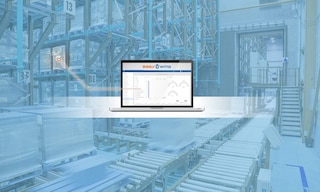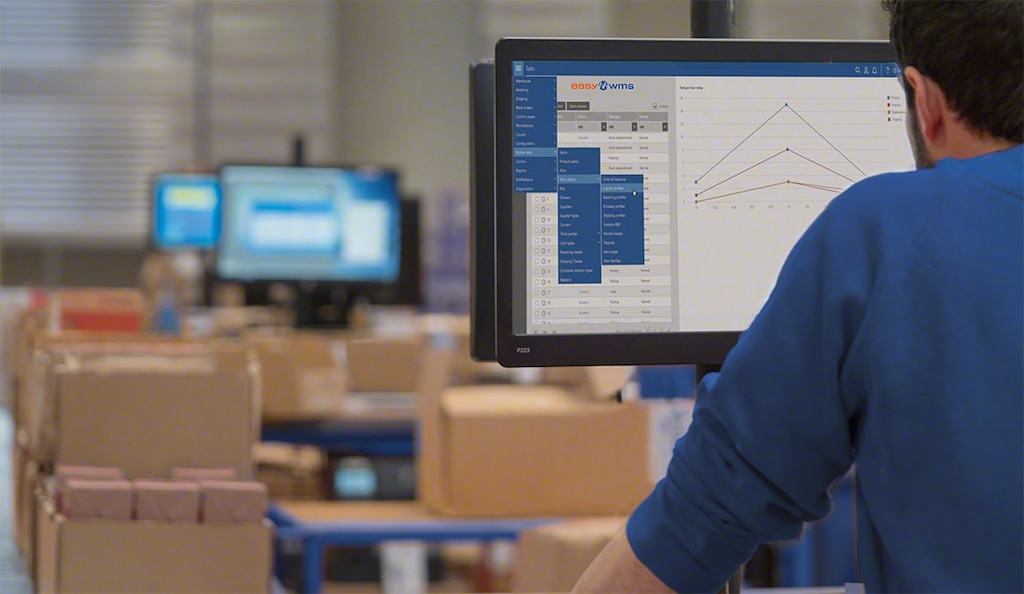
Traceability system for logistics efficiency
A traceability system enables companies to monitor products in real time along the various stages of the supply chain.
Adopting traceability systems is a rising trend among businesses in all sectors. But it’s especially recommended for those in the food, pharmaceutical, and chemical industries. The safety and quality of goods are factors increasingly valued by suppliers and consumers that want to know what phases each product has gone through.
What is a traceability system?
A traceability system encompasses a set of procedures that allow users to know a product’s history and location in each stage it undergoes. These include its manufacture, storage, logistics transportation, and delivery to the end customer.
Traceability systems must be designed based on how the data related to the goods arrive as well as the origin of that information:
- Internal traceability. This refers to the collection of product data during internal company processes, e.g., storage and manufacturing.
- External traceability. This relates to information on stock movements generated outside the organization, i.e., between the different links in the supply chain. Examples include processes with suppliers or customers.
Thanks to traceability systems, businesses can monitor everything occurring in their logistics chain and easily detect the origin of any possible incident. This is essential, especially in sectors where stock quality and safety are top priorities.
Benefits of a traceability system
A traceability system is crucial for accessing a product’s history. These are some of its main advantages:
- Information in real time. The company can know the characteristics and exact location of its items by tracking their journey through the different supply chain phases.
- Optimal product management. By having access to all the necessary data on their goods, businesses can plan processes and manage inventory much more effectively.
- Rapid response to incidents. A traceability system makes it possible to quickly identify and locate goods that, if damaged or in poor condition, must be removed from the supply chain or the market.
- Compliance with current regulations. Traceability makes it easier for companies to verify compliance with the specific legislation for each design, manufacturing, and distribution process.
- Enhanced customer confidence. A business with a traceability system in place inspires trust in consumers, increasing their desire to buy products or services.

How do you create a traceability system?
To have an effective traceability system, it’s vital to perform the following operations:
- Product identification. Merchandise must be recorded individually or grouped in batches. To that end, barcodes or QR codes are used to control traceability in goods receipt and order shipping, particularly when managing many SKUs. In recent years, other technologies have been gaining ground in this area. These include RFID tags, which streamline logistics processes and significantly boost warehouse productivity.
- Data recording and storage. Once the products are identified, the information is logged in a specialized software program through a data capture device, which acts as a bridge between the physical and digital worlds. These devices can be barcode readers, temperature and humidity sensors, and RFID antennas or gates. By capturing the data, the information is stored and can be consulted as needed.
- Shared and transparent information. The final step consists of ensuring the continuous flow of information between the companies involved in the design, manufacture, storage, and sale of the product or service. The aim is to connect all these businesses to guarantee the traceability of the goods.
Software for a traceability system
Employing traceability software is an effective solution for managing all information relating to a product in a way that’s controlled, effective, and error-free.
For a traceability system to work efficiently, the software must be able to detail the complete history of the merchandise, such as the supplier that provided the raw materials or other items used in the production and assembly phases. It should also be able to locate any product at any time and know its logistics attributes, i.e., its origin, serial number, EAN code, color, manufacture date, and best-by date. Lastly, in the event that certain goods are subject to a type of security measure, the program must block them and keep them stored for the necessary time until they can be distributed and marketed.
The market offers several types of software to manage a traceability system. These are the main ones:
- Enterprise resource planning system: ERP software coordinates business processes by means of a database shared by the main areas of a company, e.g., sales, accounting, production, and human resources.
- Warehouse management software: a warehouse management system (WMS) — such as Easy WMS from Interlake Mecalux — optimizes all material flows in a facility. It records all product movements and communicates with the rest of the business’s systems to share traceability data.
- Manufacturing execution system: MES software organizes, controls, and monitors the processes taking place in production centers, maximizing efficiency and minimizing costs. These systems can be integrated with warehouse management software like Easy WMS via the WMS for Manufacturing module, enabling end-to-end traceability of production processes.
- Fleet management system: this software is charged with organizing and planning delivery routes. With ecommerce shipments, the program allows customers to track the status of their orders. The system can be integrated with a WMS to streamline information exchange and ensure efficient packaging and labeling processes. In the case of Interlake Mecalux’s Easy WMS, this is made possible with the Multi Carrier Shipping Software module, which automates communication between the warehouse and transportation agencies.

All products under control
Traceability systems are designed to enhance product safety, control risks, and guarantee the quality of goods and operations. Having all your goods under control and knowing detailed information on business processes builds trust. Using a traceability system could be what sets you apart from the competition.
Want to know how Interlake Mecalux’s specialized software can provide you with a traceability system? Be sure to contact us.
